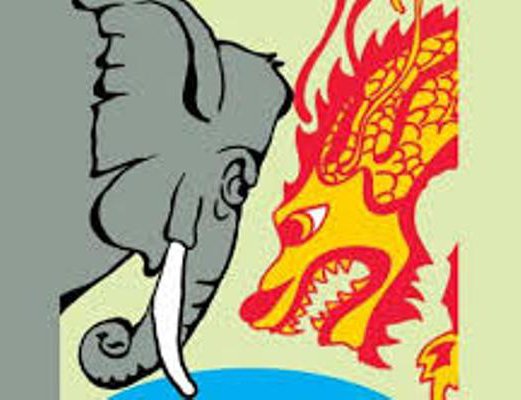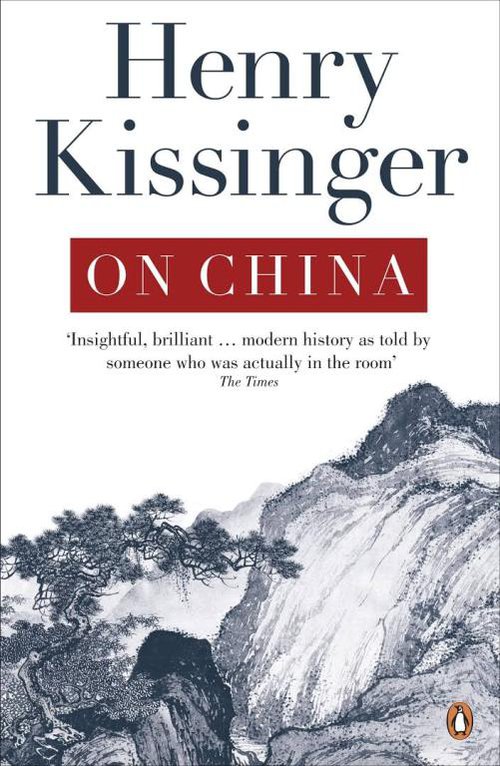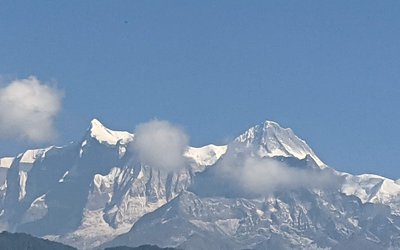
Four significant messages stand out as the core of Prithvi Narayan Shah’s Dibya Upadesh advice from his death-bed to his successors. First, Nepal was a nation forged with great effort that was not to be divided as fiefdom by his descendants but to remain as a unified but diverse flower garden of many hues where all were to uphold their own kul dharma. Second, his Nepal was the Asli (true) Hindustan since the Ganga maidan had lost the claim to that title with its political and cultural capitulation to the Moguls and the British. Third, Nepal was a yam between the two boulders of Bhot and Mughlan, the latter being the more crafty one to be wary of. And fourth, self-reliance was to be the core economic guiding principle of this country, because without it the country was in danger of being colonized by the two boulders.
The current Loktantrick dispensation has completely trampled on these sacred principles on which this nation was founded. Since 1990, Kangress and EhMaLey, despite paying lip-service to their stated political ideology of democratic socialism and Marxism respectively, have completely given up on economic self-reliance. Instead, they have succumbed to neo-liberal globalization that has de-industrialized Nepal and turned its youth into helpless proletariats in the Gulf and elsewhere. Since the 2005 political adventurism under Mughlani tutelage, they have weakened Nepal’s unity with their half-baked federalism and have been handmaiden in erasing her history through republicanism and culture through meaningless secularism. A footnoted secularism in the 2015 constitution absurdly defining it as “protection of sanaatan tradition” is meaningless because the Dibya Upadesh already specified that everyone was to follow their kul dharma without insulting others in this Asli Hindustan. There was no need, in PM Krishna Prasad Bhattarai’s words, for such an imported ideology!
With such self-inflicted wounds debilitating the entire socio-political fabric of the country as well as its very historical foundation, the yam that is Nepal finds itself squeezed as rarely ever before by the two boulders between Lipulekh/Kalapani to the west and Doklam to the east. Our external context has unexpectedly changed even as the sheer incompetence of our current crop of big party political leadership reaches a new nadir. For those Nepalis worried by this situation, it is worth reflecting on the larger geo-political context. The external international balance-of-power was already changing over the last two decades and the Doklam standoff between Bhot and Mughlan has only brought some of those contradictions more sharply to the fore.
Ever since Nietzsche influenced
Spengler who wrote the Decline of the West, there have been counter-views
that this obituary, like the vulgar Marxist’s demise of capitalism, is grossly
premature. Toynbee provided a sweeping alternative panorama of history that
downplayed the Westphalian nation-state and saw a larger and more meaningful
entity of historical study in “civilization”. Opposed by Marxist historians and
Western liberals alike because he challenged their historical orthodoxy,
Toynbee’s idea of “civilization” as a more meaningful unit of analysis receive
a boost with Huntington and his Clash of Civilizations even though it is
a pale shadow compared to Toynbee’s twelve-volume work that took almost three
decades to complete. When one looks at today’s conflicts around the world, we
certainly see Toynbee’s civilizational units confronting each other: Orthodox
Christianity versus the West (Russia in Ukraine, Syria), Confucian Sinic world
versus the West (China in South China Sea and Korea), Syriaic Iranian Islam
versus West (Iraq, Syria, Afghanistan, Libya), Indic versus Sinic (Doklam,
Nepal) and so on. Certainly a West dominated world order that began in the
Fifteenth Century and reached its apogee in the last decade of the 20th
Century (Spengler predicted the year 2000 as the marking point in the decline
of the West) seems to be unable to maintain that high point through a creative
minority and is increasingly relying on a coercive, dominant minority a la
Trump, White Supremacy and “fire and fury” (just as Spengler and Toynbee
predicted)! Toynbee also talks of an internal proletariat that needs to be kept
under control by the creative minority through a universal church and an
external proletariat (barbarians beyond the pale) through a universal state.
The West maintained its dominance through the universal church of science and technology and the universal state of a powerful and vibrant market (as also through the Bretton Woods mechanism), especially after the Second World War. That universal hegemony was challenged quite successfully first by China, then Iran and now by Putin’s Russia in both technology and military prowess. While this countervailing thrust was developing, the West itself began to suffer from self-inflicted wounds, externally in South East Asia and the Middle East and internally with the market being hollowed out by its dominant elites from within through excessive greed manifested in ephemeral derivatives and junk bonds.
Following Toynbee’s framing, what does it mean for us here in Nepal at the fault line of primarily Sinic and Indic civilizations? Henry Kissinger, in his perceptive 2014 book World Order, writes: “For centuries, Nepal skillfully balanced its diplomatic posture between the ruling dynasties in China and those in India—offering letters and gifts that were interpreted as tribute in China but recorded as evidence of equal exchanges in Nepal, then holding out a special tie with China as a guarantee of Nepal’s independence vis-à-vis India.” (He also discusses Nepal without mentioning it in the preface of his equally insightful book On China: pinpointing the nature of Chinese coercive diplomacy vis-à-vis India just before the 1962 Sino-Indian conflict, he shows how the Chinese go back centuries in their civilizational history to formulate today’s policies.) Will this old strategy of Nepal since Licchavi times onwards mean anything in today’s age of internet and rapid information flows?
The first question to ask and settle is where the still dominant West figures in this seismic grinding. The Indic civilization is one that saw its last universal state in the Mauryan and Gupta empires, and universal church in Hinayanan Buddhism, the relics of which survive in South Asia only in Sri Lanka and in Newar Buddhism of Kathmandu Valley. In the millennia that followed, Indic civilization has proven itself notorious for inviting external “barbarians” (mlecchya, in Sanskrit) to maintain social order through alien means, the Mogul and British empires being the latest examples. The departure of the British left behind India as its main successor state (with the Raj having been indigenized in its latter years by the native Babus of the East India Company). Pakistan, amputated and left divided east and west, is increasingly showing that it perceives itself as a successor to the Mogul Raj, a development which went into decline with the defeat and death of Shah Jahan’s ecumenical Crown Prince Dara Sikhoh at the hands of his younger brother Aurangzeb, and was finally arrested in 1857 following the Sepoy Mutiny.
While the ethos of British rule continues today in Mughlan, its latest expression being the economic blockades of Nepal and Bhutan, there is a growing battle brewing in the Ganga plains between the Raj successor state that is India and a resurgent Bharat of the RSS/BJP which draws its values from older Hindu springs. Writing in the Indian Express on 15th August, BJP general secretary and RSS ideologue Ram Madhav describes the mission of Modi’s Mughlan in the following words: “…Nehru sought to take the country in the direction of the ideas he had inherited from the colonial masters and from his personal experience in Europe … Modi is ever ready to wear quintessential Indian ideas on his sleeve…“. He argues that Mahatma Gandhi disagreed vehemently with Nehru on taking India along that line and Modi is the natural inheritor of Gandhi’s mantle. This argument makes India’s liberals very uneasy but seems to have fired (in his words) “the mob, the humble people” of Mughlan in no small measure.
Things are not that simple with Mughlan as Ram Madhav paints it. Modi and BJP have exhibited unprecedented jingoism and militancy that is completely at odds with Gandhian egalitarianism. And they have entered into conflict with China – much as Nehru adventurously did in 1962 – but this time piggy-backing on an external “barbarian” in the form of Trump. And Trump has already indicated his price for it: in his speech at the military base last Monday, he will want Modi to pay for the reconstruction of Afghanistan left in a war-torn mess by the West!
Which way this “clash of civilizations” – Confucian, Hindu, Islamic as well as Russian Orthodox and Western Christian – on the Himalayan fault line will head towards is anyone’s guess. And it certainly does not help find clarity when we have in Nepal one of the historically most ignorant and morally most bankrupt leadership in the form of Loktantra’s kleptocratic politicians.

Dipak Gyawali
Gyawali is Pragya (Academician) of the Nepal Academy of Science and Technology (NAST) and former minister of water resources.
- Maldevelopment And Technology: Ethos Harbingering Coming Apocalypse
- Apr 03, 2024
- World Social Forum: Rethinking and Redefining Development Itself
- Feb 21, 2024
- Remembering An Inspiring Karma Yogi
- Jan 09, 2024
- New World Disorder And The Case For Ideology
- Dec 13, 2023
- Loktantra’s Moral Turpitude
- Nov 06, 2023















